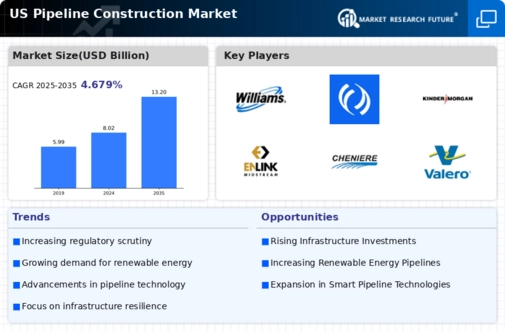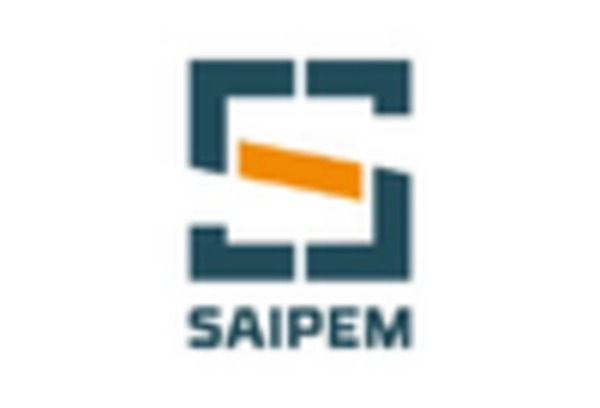Rising Energy Demand
The increasing energy demand in the US is a pivotal driver for the pipeline construction market. As the population grows and industrial activities expand, the need for efficient energy transportation becomes paramount. The US Energy Information Administration projects that energy consumption will rise by approximately 10% over the next decade. This surge necessitates the construction of new pipelines to transport oil, natural gas, and other energy resources. Consequently, investments in pipeline infrastructure are expected to reach $100 billion by 2030, reflecting the urgency to meet energy needs. Thus, the rising energy demand is a significant factor propelling the pipeline construction market.
Regulatory Framework Enhancements
The pipeline construction market in the US is currently influenced by evolving regulatory frameworks that aim to enhance safety and environmental standards. Recent legislative measures have introduced stricter compliance requirements, which necessitate advanced construction practices. This shift is likely to drive demand for innovative technologies and materials that meet these new standards. As a result, companies in the pipeline construction market may need to invest significantly in training and development to ensure compliance. The financial implications of these regulations could be substantial, with estimates suggesting that compliance costs may increase project budgets by up to 15%. Therefore, the regulatory landscape is a critical driver shaping the future of the pipeline construction market.
Urbanization and Population Growth
Urbanization and population growth in the US are significant drivers of the pipeline construction market. As cities expand and populations increase, the demand for essential services, including water, gas, and electricity, intensifies. The US Census Bureau projects that urban areas will grow by 15% over the next decade, necessitating the expansion of pipeline networks to accommodate this growth. This urban expansion is likely to lead to increased investments in pipeline construction, with estimates suggesting that urban infrastructure projects could exceed $50 billion by 2035. Therefore, urbanization and population growth are critical factors influencing the pipeline construction market, driving the need for enhanced infrastructure.
Technological Advancements in Construction
Technological advancements are reshaping the pipeline construction market, offering innovative solutions that enhance efficiency and safety. The integration of automation, drones, and advanced materials is revolutionizing construction processes. For instance, the use of drones for surveying and monitoring can reduce project timelines by up to 20%. Additionally, the adoption of smart pipeline technologies allows for real-time monitoring, which can prevent leaks and reduce maintenance costs. As these technologies become more prevalent, they are likely to attract investment and drive growth in the pipeline construction market. Companies that embrace these advancements may gain a competitive edge, positioning themselves favorably in a rapidly evolving industry.
Investment in Renewable Energy Infrastructure
The shift towards renewable energy sources is influencing the pipeline construction market, as new infrastructure is required to support the transition. Investments in renewable energy projects, such as wind and solar, necessitate the construction of pipelines for transporting biofuels and hydrogen. The US government has committed to increasing renewable energy capacity, with a target of achieving 50% of electricity generation from renewable sources by 2030. This commitment is expected to drive an estimated $30 billion in investments in related pipeline infrastructure. Consequently, the focus on renewable energy is emerging as a crucial driver for the pipeline construction market, fostering growth and innovation.

















Leave a Comment